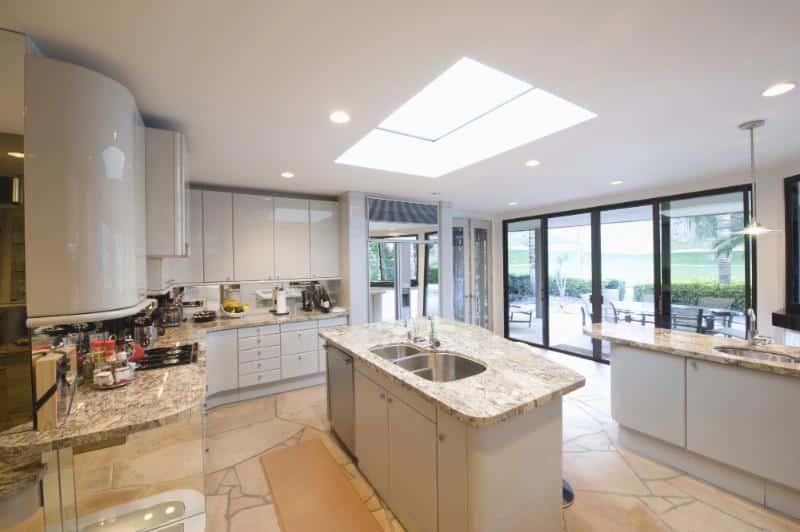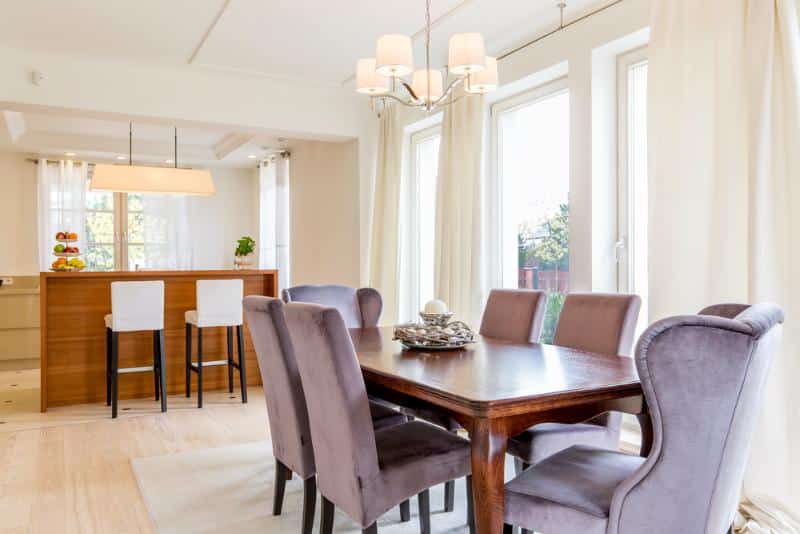Natural light can dramatically transform the aura of your home, offering myriad aesthetic and health benefits. A home bathed in sunlight not only appears more spacious and inviting but also fosters a serene and uplifting environment. This blog post will provide practical, easy-to-implement tips to maximize the influx of natural light, brightening every corner of your home, and enhancing your living experience. Let’s explore how to best utilize and enjoy the gift of nature’s illumination.

Window Upgrades
Revamping your windows can make a significant difference in the amount of natural light entering your home. Opt for larger, floor-to-ceiling windows, or even consider adding more windows if your home’s construction allows. Consider getting a skylight installed in rooms with limited access to natural light. This will not only bring in more sunlight but also create a unique architectural feature, adding character and depth to your space.
Strategic Furniture Placement
The arrangement of your furniture can significantly influence how much natural light circulates within your home. Keep larger pieces of furniture, like bookcases and wardrobes, against walls that do not receive direct sunlight to avoid blocking light entering the room. Similarly, placing mirrors opposite windows can reflect sunlight into the room, effectively doubling the amount of perceived natural light. Glass or lucite furniture can also be a great choice as they do not obstruct light, helping to create an airy and light-filled space.
Mirror Magic
Mirrors can serve as a powerful tool to enhance natural light in your home. They reflect sunlight, amplifying the brightness of a room by bouncing light into every corner. Place large mirrors on walls perpendicular to your windows, not directly across from them. This allows the mirror to catch the light from the window and disperse it more effectively throughout the room.
Mirrored furniture or decor accessories can also contribute to this effect. Furthermore, using a gallery wall of smaller mirrors can create an interesting focal point while simultaneously brightening up the space. Don’t be afraid to get creative with mirror placements and see your home light up in new and unexpected ways. You may even find custom designed mirrors in Englewood, Florida, so if you are in the area consider visiting local artisan shops or design studios to explore unique options that suit your style and space.
Selecting Light-Colored Paints
The color of your walls plays a vital role in the amount of natural light that is reflected within the rooms of your home. Lighter shades on walls and ceilings bounce more sunlight around, creating a bright and airy atmosphere. Opt for paint with a satin or semi-gloss finish, as these reflect light more effectively compared to matte finishes.
White is the most reflective color and can be an excellent choice to maximize natural light; however, it’s not your only option. Light neutrals, pastels, and cool tones like blues and greens can also amplify a room’s luminosity while adding a touch of color. For a cohesive look, ensure the chosen paint complements your home’s overall color scheme and decor.
Glass Doors and Partitions
Incorporating glass doors and partitions into your home’s design is yet another effective strategy to enhance natural light. Exterior glass doors, such as French doors or sliding doors, not only let in more sunlight but also visually connect your indoor space with the outdoors, creating a sense of spaciousness.
For interior divisions, consider replacing traditional wooden doors with translucent glass doors. They allow natural light to flow freely between rooms, ensuring no area is left dim or shadowy. Similarly, open floor plans or glass partitions can be used to segregate spaces without compromising on light.
This is particularly beneficial in apartments or smaller homes where space is at a premium. When choosing glass for doors or partitions, consider options like frosted glass, which maintains privacy while still letting light pass through.

Trimming Overgrown Outdoor Foliage
A lush, green outdoor space can sometimes obstruct the natural light entering your home. Overgrown trees, shrubs, and foliage may cast unwanted shadows, diminishing the full potential of your home’s daylight. Regular maintenance of your garden or yard is therefore essential to control the growth of these light barriers.
Prune trees and shrubs that are growing too close to your home or windows. Pay extra attention to higher branches, as they can block sunlight from reaching the windows. Trimming your foliage not only ensures maximum natural light indoors but also promotes healthier plant growth. For multi-story homes or larger trees, consider hiring professional help to safely manage the task.
In conclusion, maximizing natural light in your home can significantly impact both the aesthetic and practical aspects of your living space. With these tips, you can effortlessly welcome the warmth and radiance of sunlight into every room, creating a harmonious balance between indoor comfort and outdoor beauty.
